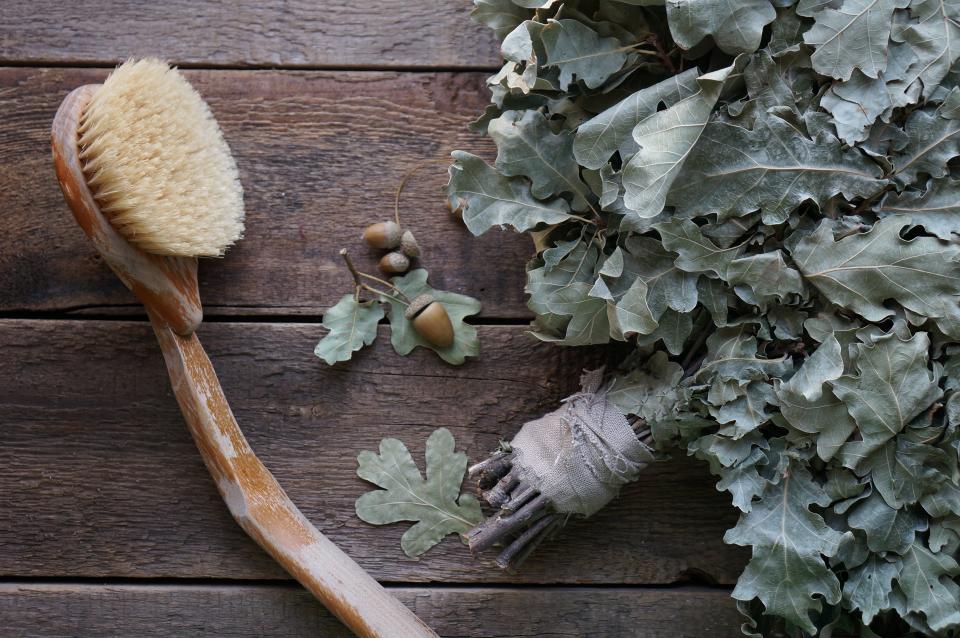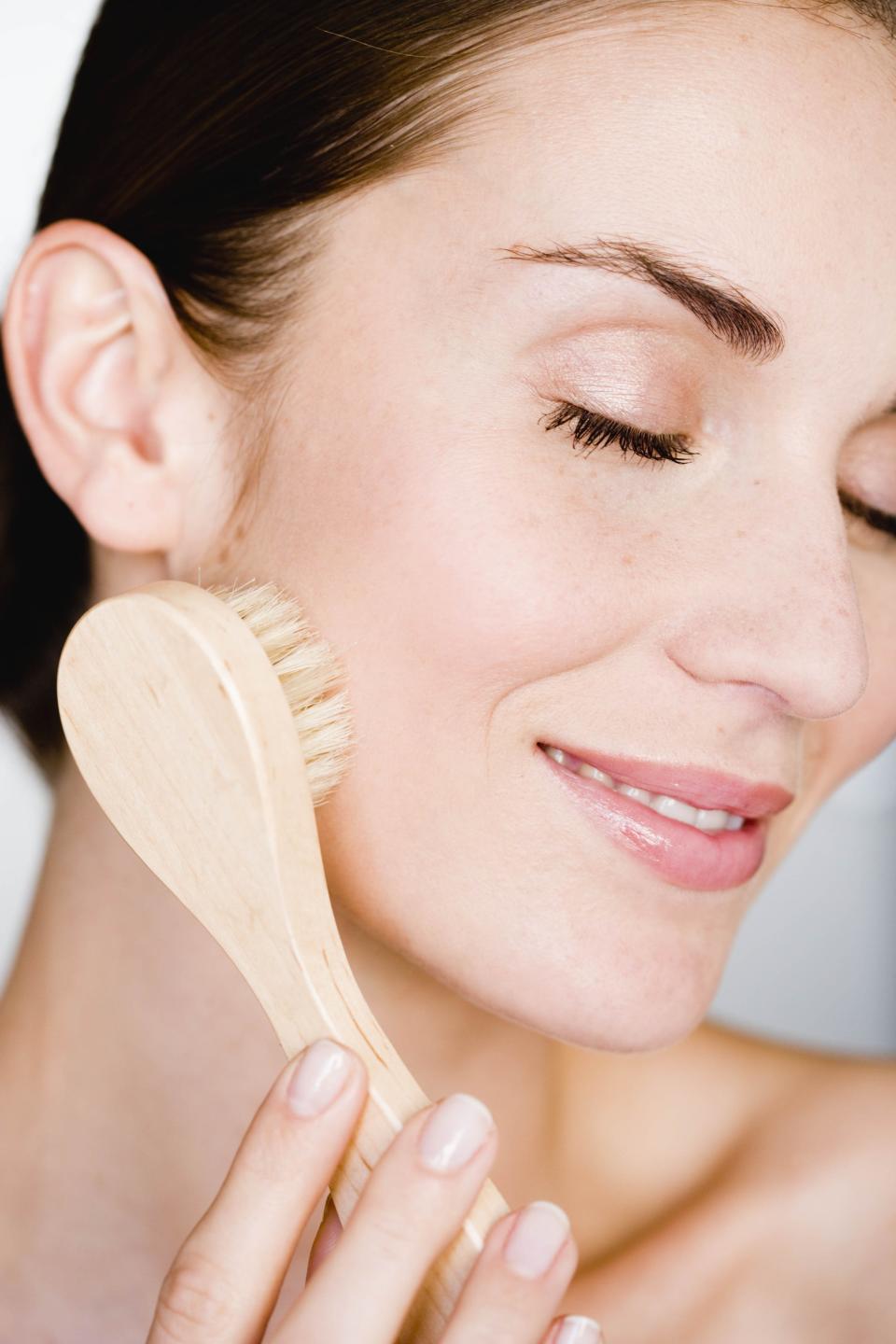Why You Should Dry Brush Your Nails (And Other Areas You Never Thought About)
It’s hard to imagine, but finding a decent dry brush was once a challenging feat. And those that knew of its supposed skin tightening, cellulite-reducing benefits before it hit the mainstream didn’t have many options to work with. After word of its incredible skincare and wellness benefits got out, the natural bristled brushes went viral. Today, dry brushes are a dime a dozen (in a good way), and the benefits are just as abundant.
And yet, we still aren’t using the technique to its full potential. Case in point: Did you know you should dry brush your nails? Don’t worry, neither did we! We called upon the dry brushing gods — AKA the experts — to find out the pros of using the tool on your nail beds, plus other common areas you never thought about.
Why You Should Dry Brush Your Nail beds

One of the best reasons to dry brush your nails is that doing so cleanses the area of any stubborn loose dirt or debris. Kimberlee Geng, a director of education of Americas at Aromatherapy Associates, explains that it helps in the promotion of circulation and exfoliation of any dry skin on or around the cuticle as well. Buffing your nail beds with these tools can also prep them for polish. According to Debra Jaliman, a board-certified dermatologist in New York City, a dry brush is like a pocket manicurist for your nails. Thanks to its mild exfoliation, it can give hands and nails a smoother surface before applying the base coat. (Photo via Happycity21/ Getty)
For the right technique, work just as you would on any other body part. “Start brushing from your fingertips going upwards toward your shoulder,” says Leah Yari, the co-founder of toxin-free nail polish brand Côte. “Always dry brush toward the heart to encourage lymphatic drainage and circulation.” Once you finish, follow up with a nourishing, nutrient-rich oil to keep your cuticles soft and healthy. For best results, brush your nails two to three times per week. However, should you wish to do it more, Jaliman says that’s totally cool — so long as you don’t irritate the cuticle or brush too harshly.
Other Areas You Never Thought About Dry Brushing

This easy-to-perform beauty treatment doesn’t just benefit nail beds and the larger surface areas on the body like the legs, butt, back, stomach, and arms; it can have major benefits to smaller, often easily forgotten areas too. “Some of the common areas of the body that people tend to skip over when dry brushing are the bottoms of their feet, their neck, and face,” explains Geng. “Dry brushing [these areas] helps to detoxify our body by stimulating lymph flow. Blood circulation is also improved, which in turn helps with tired, heavy legs and can help improve the appearance and tone of the skin on the face and neck.” (Photo via Brigitte Sporrer/Getty)
In addition to the feet, neck, and face, pay close attention to any areas you wish were brighter and more youthful-looking. “Stimulating areas of the body with dry brushing helps to bring oxygen to that area. [This] helps with anti-aging because collagen production [improves] as blood flow increases via the brush’s massage,” says Jaliman.
No matter where you choose to exfoliate, you’ll notice eye-opening results in the form of smoother, brighter, firmer skin. Explains Geng, “When sweeping the brush across the skin, [it] lifts the dead skin cells on the surface and encourages [the] renewal of new, healthy skin cells.”
If you try this skincare ritual on your nails or other overlooked areas of your body, tell us how it goes @BritandCo.


